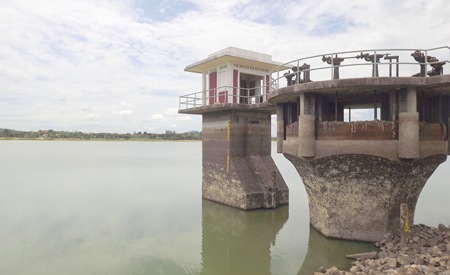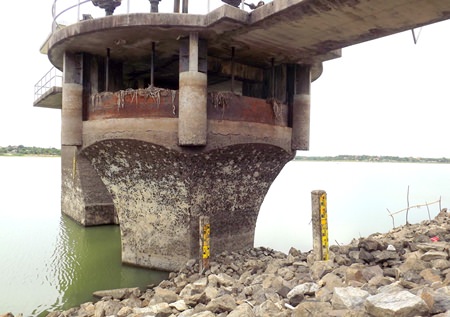Pattaya has begun looking for private investors to build a new wastewater-treatment plant after appeals to public agencies failed to generate funding for the 30 million baht project.
Deputy Mayor Verawat Khakhay chaired a Dec. 10 meeting with representatives from the water-supply industry to discuss how to get private investors to build the city a new plant.
 Pattaya has begun looking for private investors to build a new wastewater-treatment plant to help fulfill Pattaya’s growing needs.
Pattaya has begun looking for private investors to build a new wastewater-treatment plant to help fulfill Pattaya’s growing needs.
Araya Ngamwongwan, general manager of for Pattaya’s Water Supply Department, said current water supplies are sufficient to handle current demand of up to 1.8 million cu. meters of water per day. It’s five sources of water can supply up to 2.5 million cu. meters.
However, if it doesn’t rain this winter and next spring, shortages will develop, he said.
At the moment, Mabprachan Reservoir has 69 percent of its capacity left, Chak Nok Lake has 32 percent, Klangdong Lake 55 percent, Huay Sapan Lake 41 percent, and Huay Khunjit has 8 percent.
The Water Supply Department contacted the Department of Irrigation and East Water Co. because of the threat of future shortages.
“We are suffering from a lack of water because it didn’t rain as much as last year, which caused problems throughout the region,” Verawat said. “Even though the government has provided a budget to connect water pipes from Bang Phra to Mabprachan and build a dam in Huay Kainao to store water, it’s still not enough.”
Therefore, he said, the city launched a “Pattaya New Water” initiative to find private investors to spend 30 million baht to build a wastewater-treatment plant that could make up the shortfall.
A plant, Verawat said, “would give time to store water. We think this will be the best solution.”
The city has formed two subcommittees to advance the project and address shortages.





